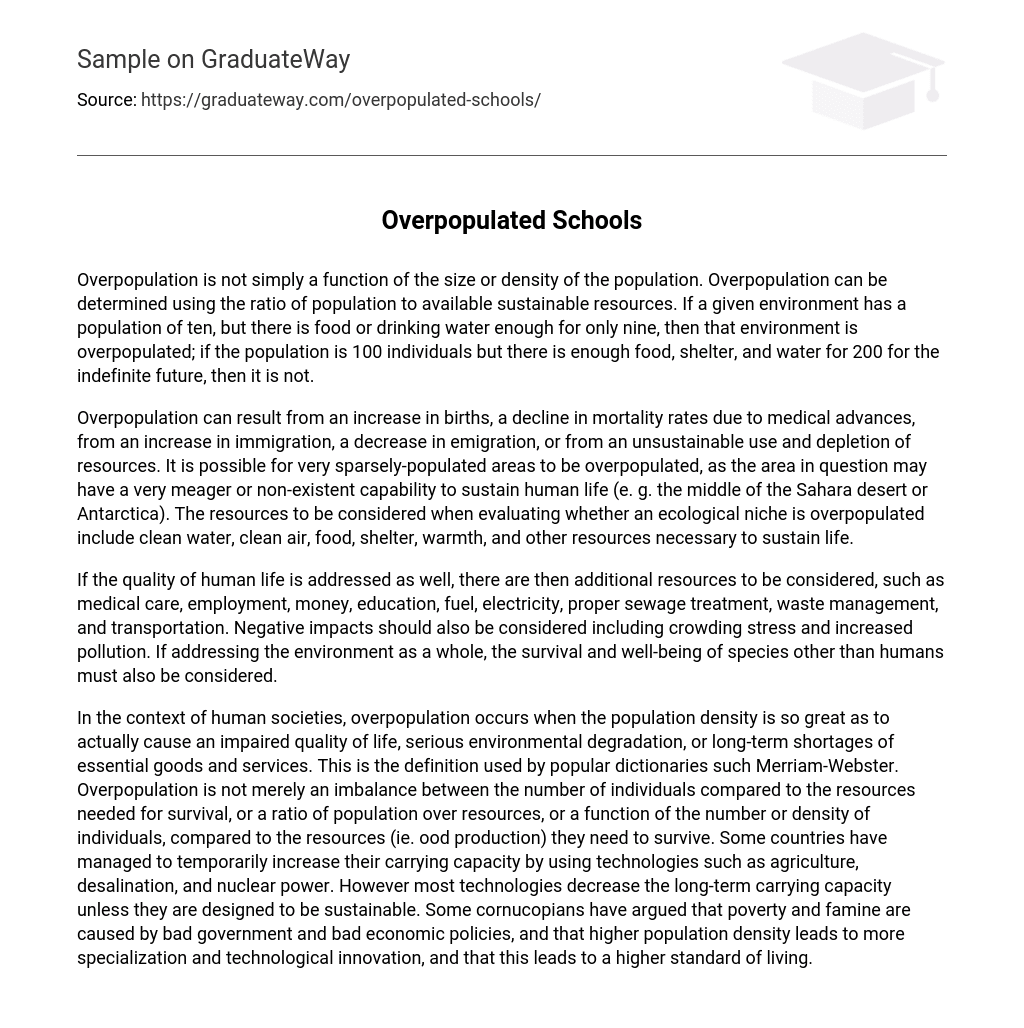The determination of overpopulation is not based solely on population size or density, but rather by evaluating the proportion of population to sustainable resources. For example, if an environment has ten individuals but can only support nine in terms of food and drinking water, it is deemed overpopulated. On the other hand, if there are 100 individuals in a population with enough resources like food, shelter, and water to indefinitely sustain 200 individuals, it is not considered overpopulated.
Overpopulation can arise from several factors. These include higher birth rates, lower mortality rates due to medical advancements, increased immigration levels, decreased emigration rates, and unsustainable use of resources leading to depletion. Even regions with low population density may be deemed overpopulated if they cannot support human life, such as the Sahara desert or Antarctica. To assess whether an ecological niche is overpopulated, it is crucial to consider vital resources like clean water, clean air, food, shelter, warmth, and other necessities for survival.
If we want to enhance the quality of human life, we must take into account various factors such as medical care, job opportunities, financial resources, educational facilities, access to fuel and electricity, proper sewage treatment and waste management systems, as well as transportation options. It is also essential to consider negative consequences like stress caused by overcrowding and increased pollution. Nevertheless, when looking at the environment as a whole, it becomes crucial to prioritize the survival and well-being of species other than humans.
According to dictionaries like Merriam-Webster, overpopulation is when the population density becomes so high that it causes a decline in quality of life, significant harm to the environment, and shortages of essential goods and services. It is not solely caused by an imbalance between the number of individuals and the resources required for survival or a ratio comparing population to resources. The number or density of individuals in relation to their resource needs also does not determine overpopulation. Some countries have temporarily increased their ability to support larger populations through technologies such as agriculture, desalination, and nuclear power. However, most technologies actually decrease long-term capacity unless they are sustainable. Supporters of the cornucopia concept argue that ineffective government and economic policies cause poverty and famine rather than higher population density. They believe that higher population density leads to specialization, technological advancement, and an improved standard of living.





